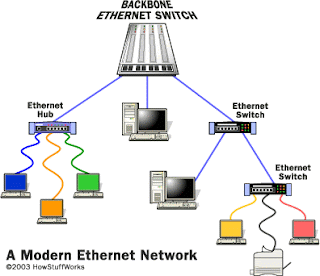The FPGA industry sprouted from programmable read-only memory (PROM) and programmable logic devices (PLDs). PROMs and PLDs both had the option of being programmed in batches in a factory or in the field (field programmable), however programmable logic was hard-wired between logic gates.
1980s
In the late 1980s the Naval Surface Warfare Department funded an experiment proposed by Steve Casselman to develop a computer that would implement 600,000 reprogrammable gates. Casselman was successful and a patent related to the system was issued in 1992.
Some of the industry’s foundational concepts and technologies for programmable logic arrays, gates, and logic blocks are founded in patents awarded to David W. Page and LuVerne R. Peterson in 1985.
Xilinx Co-Founders, Ross Freeman and Bernard Vonderschmitt, invented the first commercially viable field programmable gate array in 1985 – the XC2064. The XC2064 had programmable gates and programmable interconnects between gates, the beginnings of a new technology and market. The XC2064 boasted a mere 64 configurable logic blocks (CLBs), with two 3-input lookup tables (LUTs). More than 20 years later, Freeman was entered into the National Inventors Hall of Fame for his invention.
Xilinx continued unchallenged and quickly growing from 1985 to the mid-1990s, when competitors sprouted up, eroding significant market-share. By 1993, Actel was serving about 18 percent of the market.
1990s
The 1990s were an explosive period of time for FPGAs, both in sophistication and the volume of production. In the early 1990s, FPGAs were primarily used in telecommunications and networking. By the end of the decade, FPGAs found their way into consumer, automotive, and industrial applications.
FPGAs got a glimpse of fame in 1997, when Adrian Thompson, a researcher working at the University of Sussex, merged genetic algorithm technology and FPGAs to create a sound recognition device. Thomson’s algorithm configured an array of 10 x 10 cells in a Xilinx FPGA chip to discriminate between two tones, utilising analogue features of the digital chip. The application of genetic algorithms to the configuration of devices like FPGAs is now referred to as Evolvable hardware.
Modern developments
A recent trend has been to take the coarse-grained architectural approach a step further by combining the logic blocks and interconnects of traditional FPGAs with embedded microprocessors and related peripherals to form a complete “system on a programmable chip”. This work mirrors the architecture by Ron Perlof and Hana Potash of Burroughs Advanced Systems Group which combined a reconfigurable CPU architecture on a single chip called the SB24. That work was done in 1982. Examples of such hybrid technologies can be found in the Xilinx Virtex-II PRO and Virtex-4 devices, which include one or more PowerPC processors embedded within the FPGA’s logic fabric. The Atmel FPSLIC is another such device, which uses an AVR processor in combination with Atmel’s programmable logic architecture. The Actel SmartFusion devices incorporate an ARM architecture Cortex-M3 hard processor core (with up to 512kB of flash and 64kB of RAM) and analog peripherals such as a multi-channel ADC and DACs to their flash-based FPGA fabric.
In 2010, an extensible processing platform was introduced for FPGAs that fused features of an ARM high-end microcontroller (hard-core implementations of a 32-bit processor, memory, and I/O) with an FPGA fabric to make FPGAs easier for embedded designers to use. By incorporating the ARM processor-based platform into a 28 nm FPGA family, the extensible processing platform enables system architects and embedded software developers to apply a combination of serial and parallel processing to address the challenges they face in designing today’s embedded systems, which must meet ever-growing demands to perform highly complex functions. By allowing them to design in a familiar ARM environment, embedded designers can benefit from the time-to-market advantages of an FPGA platform compared to more traditional design cycles associated with ASICs.
An alternate approach to using hard-macro processors is to make use of soft processor cores that are implemented within the FPGA logic. MicroBlaze and Nios II are examples of popular softcore processors.
As previously mentioned, many modern FPGAs have the ability to be reprogrammed at “run time,” and this is leading to the idea of reconfigurable computing or reconfigurable systems — CPUs that reconfigure themselves to suit the task at hand. The Mitrion Virtual Processor from Mitrionics is an example of a reconfigurable soft processor, implemented on FPGAs. However, it does not support dynamic reconfiguration at runtime, but instead adapts itself to a specific program.
Additionally, new, non-FPGA architectures are beginning to emerge. Software-configurable microprocessors such as the Stretch S5000 adopt a hybrid approach by providing an array of processor cores and FPGA-like programmable cores on the same chip.


